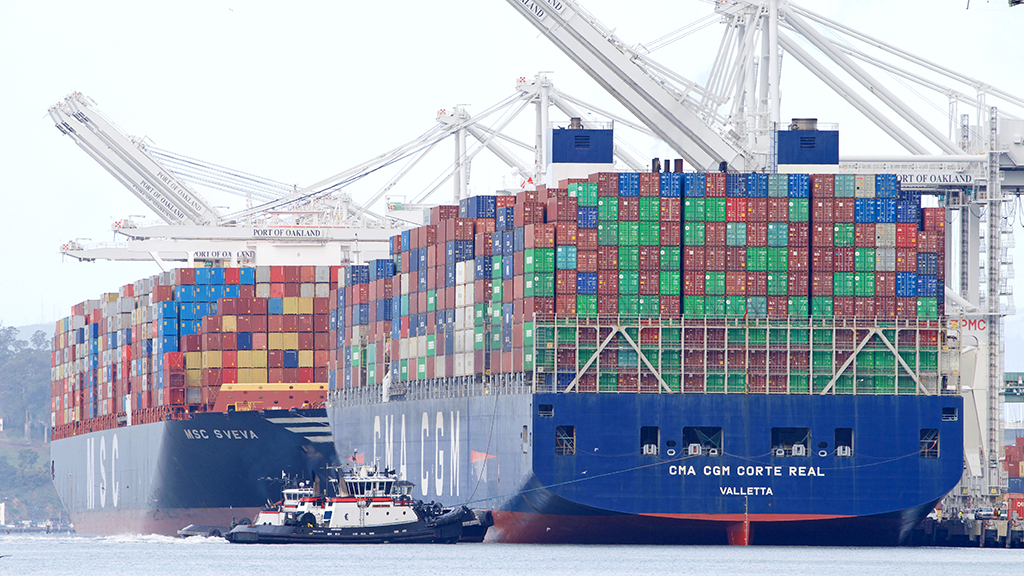For me, at least, there’s been a surprising benefit arising from the attention given to the trading of goods as a result of the Donald Trump Administration’s altering of the tariff framework ‒ discovery of a wonderful different source of data other than the usual band of musicians, the Census Bureau, the Bureau of Labor Statistics (BLS), and the Bureau of Economic Analysis (BEA). Let me refer you to the U.S. Geological Survey (USGS), a science bureau within the Department of the Interior, and its Mineral Commodity Summaries 2025 report.
For more than 80 commodities, the report delivers statistics on annual (for 2024) domestic and foreign production levels of each of the specified goods, with particularly interesting numbers, given the concerns about new tariff cost implications, on the percentage of U.S. total home consumption that derives from net imports (i.e., imports of the commodity minus exports).
The following are the key material inputs for the nation’s construction industry. Let’s begin with several quintessential building blocks and then close out with some other minerals essential to the economy’s health overall, and with roles vital to the success of decarbonization efforts.
Cement
Usage: Concrete (ubiquitous in all nonresidential construction), precast concrete products, mortar, grout, fiber cement board, self-leveling compounds
In 2024, Portland and blended cement were produced in 99 plants in 34 U.S. states, led by Texas, Missouri, California, and Florida. Nevertheless, there was significant import reliance. Net imports were 22% of total consumption, with the major source countries being Turkey (32%), Canada (22%), and Vietnam (10%). U.S. exports of cement last year were negligible.
China’s cement production exceeds America’s by a factor of twenty times. India is in second place globally but lags China by a large margin, with an output ratio of only about a fifth.
As an interesting sidebar, 2024’s production of the sand and gravel, plus crushed stone, that is used as aggregate in concrete production was almost entirely sourced within the U.S. There are 6,500 gravel pits widely distributed across the country, with California, Texas, Arizona, Minnesota, and Michigan in the forefront.
Steel
Usage: Structural (beams, trusses, joists, decking), roofing, wall framing, exterior cladding, rebar, post-tensioning cable, doors, elevators & escalators, stairs, HVAC ductwork
Pig iron and raw steel production in the U.S. in 2024 was sourced 72% from electric arc furnaces versus 28% from basic oxygen furnaces. The ranking of shipments to customers had construction in first place (28%), followed by steel service centers and distributors (23%), and in third place, automotive (15%). Exports were minimal relative to imports. America’s net import reliance as a percentage of total consumption was 13%.
Canada (23%) led the countries from which the U.S. drew most of its steel imports in 2024, followed by Mexico (16%), Brazil (13%), and South Korea (9%).
Again, on the global stage, China’s steel production vastly exceeds any other country’s tally. The U.S. is vying with Japan for third place, behind India in second. Russia isn’t too far back in fifth.
Aluminum
Usage: Windows & doors, curtainwalls, composite panels, siding & soffit systems, ceiling systems, railings, lighting fixtures, plumbing fixtures
There are only a few pockets of primary and secondary (from new and discarded scrap) production of aluminum in the U.S. As a result, net imports comprised nearly half (47%) of total consumption in 2024. The industries accounting for the highest percentages of overall purchases last year were transportation (36%), packaging (23%), buildings (14%), electrical (9%), and consumer durables and machinery (8%).
Over half (56%) of the aluminum imported into the U.S. in 2024 came from Canada. The next leading suppliers were the United Arab Emirates (8%) and Bahrain (4%). Smelter production worldwide in 2024 saw China in its usual position, way out in front at more than 50% of the total. India, Canada, Russia, and the UAE made up a distantly trailing next-biggest tier.
A hindrance to the expansion of U.S. aluminum production will be the nation’s heavy reliance on foreign purchases of bauxite and alumina (produced from bauxite ore). The combined reliance on net imports of those two inputs in 2024 was 59%, with 67% of total bauxite imports coming from Jamaica and 68% of total alumina imports onshoring from Brazil.
Gypsum
Usage: Wallboard, drywall, plaster, ceiling systems, self-leveling underlayment, flooring, compounds
Gypsum is a rarity because the U.S. leads all countries in mined production, with Iran, Oman, China, Spain, and Turkey the next powerhouses. Still, in 2024, the share of U.S. total gypsum consumption taken by net imports was 17%, with Spain at 36% of the inward-bound shipments, Mexico at 31%, and Canada at 29%.
The most notable crude gypsum-producing states are California, Iowa, Kansas, Nevada, Oklahoma, and Texas. Nationwide, there are 45 mines in 15 states. Those of us in the building industry think mainly of gypsum’s use in wallboard and plaster products. But there are soil reclamation and enhancement qualities, plus irrigation aspects, that also make it a star in the agricultural sector.
Copper
Usage: Plumbing systems, electrical systems, HVAC systems, wiring, roofing systems, door hardware, geothermal heat transfer systems
Arizona accounts for the largest share of copper mining among states in America, 70%. But the U.S. has a marked deficit in copper production overall, necessitating a net import slice of total consumption that was 45% in 2024.
By industry, the main users of copper and its alloy products last year were building construction (42%), electrical and electronic products (23%), and transportation equipment (18%). Whether as an ore or in its refined form, Canada and Chile dominated as foreign sources.
Silver
Usage: Photovoltaics, such as solar panels
The two leading states in the domestic production of multi-purpose silver (i.e., jewelry, electronic circuitry, photography, and solar panels) are Alaska and Idaho. Net imports, however, made up 64% of U.S. total consumption in 2024. Mexico’s share of total silver imports was 44%; Canada’s 17%.
What we’ve covered so far are minerals that have an obvious presence on job sites. What about those minerals more subtly hidden in budgetary costs, such as the operation of machinery and equipment assets, which are increasingly going electric versus gasoline and diesel?
Now we’re speaking of batteries dependent on minerals such as nickel, with a net import dependency ratio of 48% (with 46% of imported nickel coming from Canada); cobalt, with a net import dependency ratio of 76% (with 27% of it coming from Norway); graphite with a net import dependency ratio of 100% (with 43% of it coming from China); lithium, with a greater than 50% import dependency ratio (with Chile and Argentina each contributing about half.)
There’s a collision into a thick brick barrier to be visualized here. With all the net import dependency ratios set out above being so high and hard to bring down even in the long term, never mind the short term, and given that tariffs on all these items entering the U.S. from countries around the world now range from 10% to 25%, with China assessed at more than 100%, it’s impossible to see how the costs of construction on the materials side can’t be substantially prodded upwards.











Recent Comments